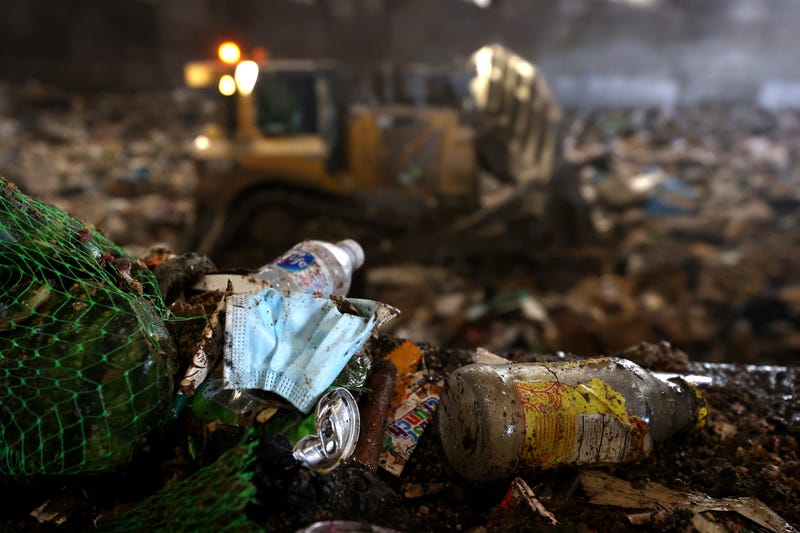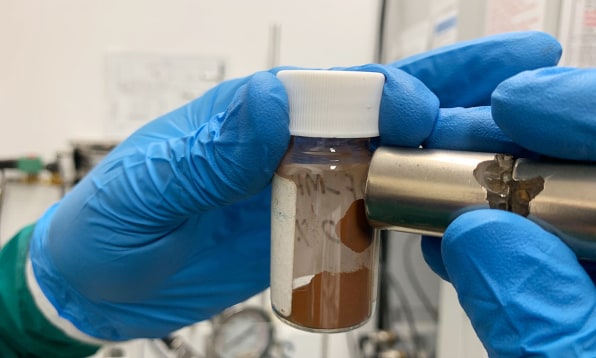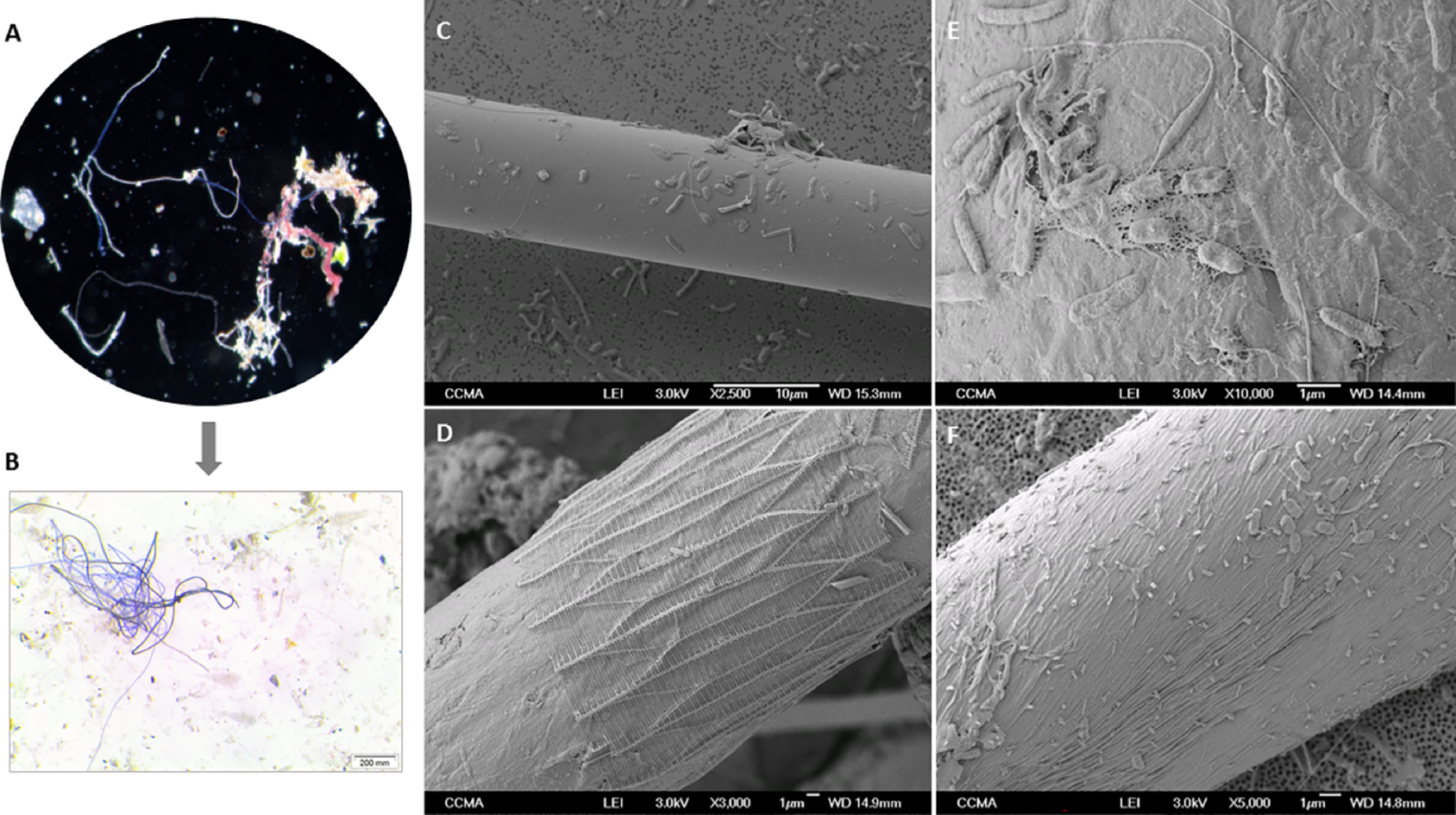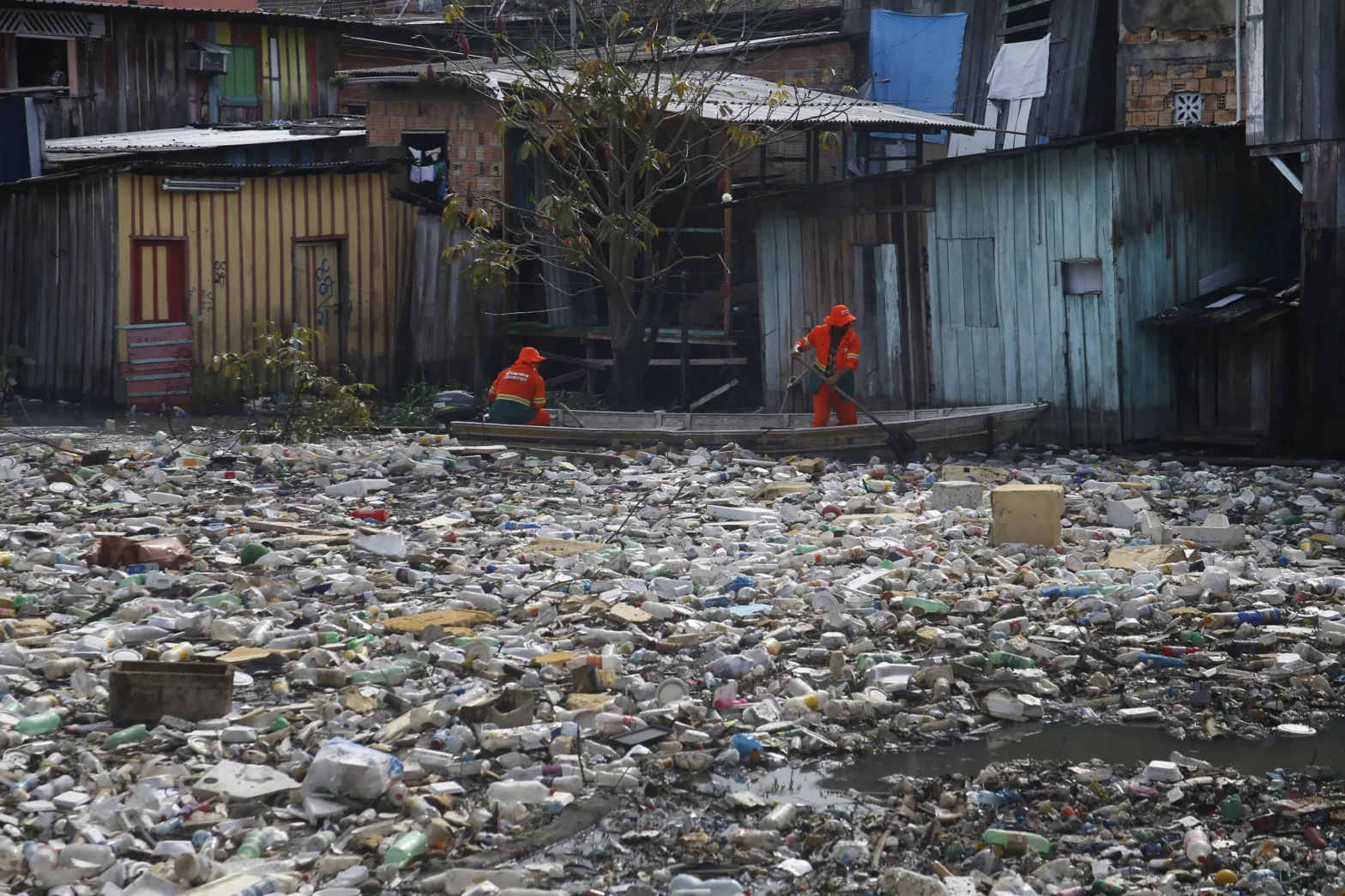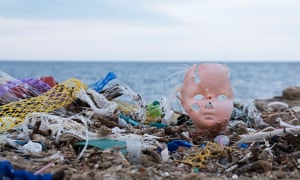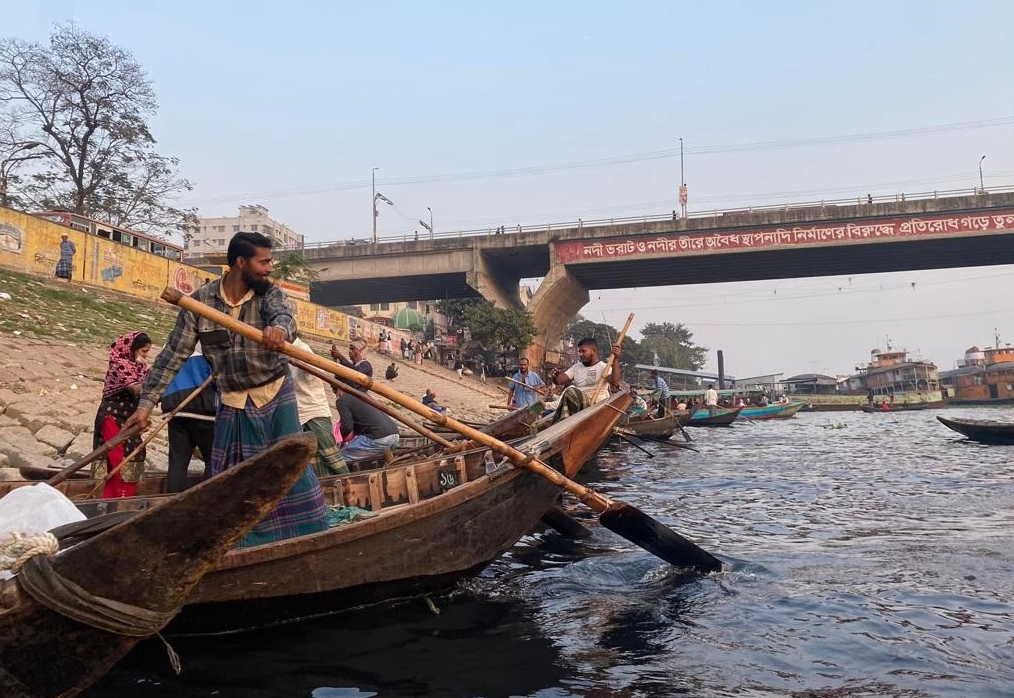What is it? BPA and BPS are two types of bisphenols, a group of chemicals with possible adverse effects on human health and environmental impact. BPA (Bisphenol A) is especially well-known due to its abundance in plastic-based products like water bottles and food containers. Though not studied as much as BPA, BPS (Bisphenol S), is …
Author Archives: David Evans
Types of Chemicals Found In Plastics
Bisphenols Bisphenols are a class of industrial chemical compounds that have been used in manufacturing products since the 1960s. They are commonly found in plastics like polycarbonates, epoxy resins and other polymers, as well as food and beverage containers, cash register receipts, the lining of water pipes, some dental composites and dental sealants. Bisphenols can …
A new plastics treaty is coming for your bags and bottles
The UN has started a series of negotiations for a legally binding treaty to end plastic pollutionPublished4 hours agoWe may earn a commission from links on this page.
Deal at N.J. Superfund site draws fire
An agreement on cleanup measures at one of the nation’s most notorious Superfund sites is drawing blowback from some environmental advocates skeptical of provisions within the deal.
The New Jersey Department of Environmental Protection announced Monday that the German chemical manufacturer BASF would settle claims for damages done to natural resources at its former Ciba-Geigy Corp. plant in Toms River. But while the state hailed the deal as a “turnaround story,” critics are already concerned that community members will have limited involvement in the process.
“Given the dirty deeds of Ciba-Geigy and past government failures, the people of Toms River and downstream communities deserve more both on and off site when it comes to cleanup, preservation and protection from future harm,” said Janet Tauro, an Ocean County resident and board chair for Clean Water Action NJ.
Advertisement
That pushback marks the latest turn for one of the most high-profile sites ever to come under EPA scrutiny.
BASF assumed responsibility for the Ciba-Geigy Toms River plant in 2010, acquiring a deeply toxic legacy. During its operational years, the site produced industrial dyes, pigments, resins and plastics, leading to major groundwater contamination and outcry as a child cancer cluster appeared to crop up across the community. It has been on EPA’s National Priority List since 1983, underscoring its outsize threat to public health and the environment.
While the site has been subject to cleanup work for years, the deal announced Monday would see around 1,000 acres permanently preserved for public benefit. Of those, 790 will be for open space and restoration projects, while 210 will be dedicated to pollinator habitat and solar energy production.
That effort could break ground as early as spring 2023, DEP said, and could take five years. The agreement will allow BASF to settle claims for environmental damage, although no cost estimate has been shared regarding the extent of the work.
“This settlement would transform one of New Jersey’s most notorious polluted sites into one of our biggest environmental success stories — one that delivers the natural resource quality that every community deserves, shoulder-to-shoulder with a good corporate citizen determined to repair the environmental damage of our shared industrial past,” said DEP Commissioner Shawn LaTourette in a statement.
Critics of the agreement, however, have noted that some parts of the site could still see some development under the terms outlined. They have also pushed back on provisions that would virtually give the state oversight of the area, something they say lets industry members off the hook for pollution.
Tauro of Clean Water Action NJ also argued that the state’s provided 30-day comment period is insufficient. She also pushed for a public hearing that would allow for more input from community members.
“A required first step is meaningful public engagement, more than just written comment, during the public comment period for this proposed settlement,” Tauro said.
Still, some advocates have been supportive of the settlement. Taylor McFarland, conservation manager for the Sierra Club’s New Jersey Chapter, called the settlement “great news” for preservation efforts in the wider Toms River area.
“More importantly, it is a step in the right direction for the people who have been suffering from the contamination of the Ciba-Geigy Superfund Site for decades,” McFarland added. “This site has been on the Superfund List since the 1980s, and it is still one of the most contaminated sites in the state, if not the country.”
Alex Ireland, president and CEO of New Jersey Audubon, similarly praised the agreement for sending funding “directly back to the community that experienced the damages from contamination.”
German trains to offer coffee in porcelain cups to cut waste
German trains to offer coffee in porcelain cups to cut wasteDeutsche Bahn passengers will be able to opt for reusable cups, plates and bowls for their food and drink from next year Deutsche Bahn passengers will be able to get their coffee in a porcelain cup from next year, the German rail operator has announced, as it seeks to cut waste.Travellers would be able to choose a “high-quality porcelain or glass” option when ordering food and drink on its intercity and high-speed services, the company said in a statement.Reusable cups, plates and bowls would be offered to customers free of charge and without a deposit for all orders from the trains’ bistros, it said. Plastic and cardboard packaging will still be available at the request of customers.Row over Germany’s public transport ticket jumping from €9 to €49Read moreThe change will bring Deutsche Bahn’s services in line with rules coming into force in Germany on 1 January. From next year, restaurants and cafes will have to offer their to-go products in reusable packaging. Single-use packaging will not be banned but an alternative must be offered free of charge.“Deutsche Bahn is driving forward its green transformation in onboard catering,” said the rail operator’s passenger services chief, Michael Peterson.As part of its efforts to reduce its environmental footprint, more than 50% of the dishes offered on Deutsche Bahn trains had been vegan or vegetarian since March, the company said.Deutsche Bahn has set itself a target of being carbon-neutral by 2040.TopicsGermanyRecyclingEthical and green livingEuropeWasteRail transportnewsReuse this content
This new magnetic powder can capture microplastics in water
When plastic waste breaks down into tiny fragments, it can’t be detected at wastewater treatment plants. This new material can help.
[Source Photos: Lisa Schaetzle/Getty Images, Andriy Onufriyenko/Getty Images]
By
Harmful bacteria found in common ocean plastics
Most bodies of water are naturally teeming with microbial life—and the Mediterranean Sea is no exception. Now, the Mediterranean’s microscopic marine organisms have a new way of getting around. They are hitching a ride on a growing fleet of plastic ships: microfibers.
In a recent study published on November 30 in the journal PLOS One, a team of biologists from Sorbonne Université in France have discovered 195 species of bacteria living on microfibers floating in the Mediterranean Sea. According to their analysis, a single microfiber could be home to more than 2,600 bacterial cells. While not all marine microbes on the plastic particles were dangerous, the researchers were particularly concerned about the level of bacterial species that could be potentially harmful to wildlife and humans.
“Plastics are a relatively new substrate in the ocean,” says Ana Luzia de Figueiredo Lacerda, study author and a marine plastic pollution researcher at Sorbonne Université. “We are discovering what is living [on plastics] to see the diversity of bacterial groups, and among these groups, what can be potentially pathogenic or invasive.”
A 2020 United Nations Environment Program report estimates that 730 tons of plastic waste end up in the Mediterranean Sea every day, leaving more than 64 million tiny floating particles per square kilometer in certain areas, including plastic microfibers. In fact, of all the world’s major oceanic basins, the Mediterranean has the highest concentration of microfibers. These small synthetic strands are released from sources such as fraying fishing nets, textile producers, or loads of laundry, explains Lacerda. “It’s one of the most abundant types of microplastic in the oceans,” she says. The high salinity and density of Mediterranean waters may also cause greater concentrations of the fibers to float near the surface, the new study notes.
[Related: The secret to longer-lasting clothing will also reduce plastic pollution]
Across the world’s oceans, plastic pollution has created a new artificial community for marine microbes—which researchers call the “plastisphere.” Free-floating bacteria and other microbiota can secrete sticky molecules that help them latch on to substrates, like wood, microalgae, or sediment. Once attached, the bacteria produce more of these sticky molecules to allow even more microbes to glom on, causing a biofilm to grow, Karen Shapiro, an infectious disease expert at the University of California, Davis, explained in an email to PopSci. But the problem with plastics is that they last much longer than natural substrates in marine environments, increasing the risk and spread of microbial contamination, Lacerda says. Some types of plastics are less dense than sea water and float on the surface where they can be carried long distances by ocean currents.
“The plastic works like a boat to these organisms,” Lacerda explains. “They transport species across regions, which could lead to changes in the function of the natural system.”
When colonized by bacteria, the plastics can smell like food to marine wildlife that might consume them by mistake. Not only does that mean the microplastics work their way through the food chain, past studies have shown that toxic chemicals in plastics could provoke hormonal dysfunctions that affect growth and reproduction in some wildlife groups, including orcas and oysters.
Photomicrograph of floating fibers collected from the coastal zone of the northwestern Mediterranean (A), and scanning electron microscopy (SEM) images of their bacterial communities (B), with elongated and rounded cells as well as the sticky molecular compounds that build biofilms (C-F). Pedrotti et al., 2022, PLOS ONE
To find out what kinds of bacteria microfibers might be harboring in the Mediterranean Sea, Lacerda and her colleagues collected samples from the northwestern end near the coasts of Monaco and Nice, France. After isolating the microfibers, the team used microscopy and DNA sequencing to identify the bacteria species on the fibers and compared them to the free-floating bacteria in the water. Among the 195 species living on the microfibers, Lacerda and the authors flagged a “great quantity” of pathogenic Vibrio parahaemolyticus, a bacteria that can cause seafood poisoning in humans.
Previous studies have found pathogenic marine microorganisms on plastics in the ocean, such as Aeromonas salmonicida, which can infect and kill salmon, and Arcobacter species, which can cause illness in people. “In one particular sample, the authors found nearly a third of the bacteria species to be V. parahaemolyticus, which is a notable proportion and of possible concern given its pathogenic potential,” Shapiro, who was not involved in the recent research but has also studied the plastisphere, wrote in her email. “These anthropogenically derived fibers that end up in our oceans could mediate disease transmission for sea life but also people that consume shellfish that can concentrate these contaminants.” V. parahaemolyticus thrives in warm brackish waters where filter feeders like oysters are typically cultivated.
[Related: A close look at the Great Pacific Garbage Patch reveals a common culprit]
Locating where microfibers—and the harmful species they carry—are abundant can help people know if certain bodies of water are safe for bathing, farming, or fishing, Lacerda says. Climate change could further the spread and pathogenicity of plastic-dwelling microorganisms that are influenced by temperature, including V. parahaemolyticus. “As the temperature of the ocean is increasing, the virulence and [plastic] adhesion of the organism also increases with the increase in temperature,” Lacerda says. This is especially important in a sand-locked sea like the Mediterranean, which is warming faster than other regions in the world. As a result, “we could expect that the plastisphere in the Mediterranean Sea could respond faster to climate change,” Lacerda notes.
According to Shapiro, the study’s findings in the Mediterranean add to the growing body of evidence that marine bacteria thriving on plastic waste is “a global phenomenon that deserves more attention.” She and Lacerda both think there need to be more investigations on the interactions between pathogens and different contaminants such as plastics to get a better understanding of how humans are altering—and harming—marine ecosystems.
“I do believe that the general public should be aware of this problem and understand that plastic pollution in the ocean doesn’t affect only marine wildlife, but can affect us,” Lacerda says. As the plastic problem continues to grow, she adds, “we have to look for another way of living.”
Negotiators take first steps toward plastic pollution treaty
More than 2,000 experts wrapped up a week of negotiations on plastic pollution Friday, at one of the largest global gatherings ever to address what even industry leaders in plastics say is a crisis.It was the first meeting of a United Nations committee set up to draft what is intended to be a landmark treaty to bring an end to plastic pollution globally.“The world needs this treaty because we are producing plastics by the billions,” said Jyoti Mathur-Filipp, executive secretary of the Intergovernmental Negotiating Committee for plastics in an interview with The Associated Press. “Billions of tons of plastics are being produced every year and there is absolutely no way to ensure that this plastic doesn’t end up in the environment.”Entire beaches on what used to be pristine islands are now mounded with trash. Examination of a random handful of sand in many places reveals pieces of plastic. The United Nations Environment Programme held the meeting in a city known for its beaches, Punta del Este, Uruguay, from Monday through Friday. ADVERTISEMENTDelegates from more than 150 countries, plastic industry representatives, environmentalists, scientists, waste pickers, tribal leaders and others affected by the pollution attended in person or virtually. Waste pickers are seeking recognition of their work and a just transition to fairly remunerated, healthy and sustainable jobs.Even in this first meeting of five planned over the next two years, factions came into focus. Some countries pressed for top-down global mandates, some for national solutions and others for both. If an agreement is eventually adopted, it would be the first legally-binding global treaty to combat plastic pollution. Leading the industry point of view was the American Chemistry Council, a trade association for chemical companies. Joshua Baca, vice president of the plastics division, said companies want to work with governments on the issue because they also are frustrated by the problem. But he said they won’t support production restrictions, as some countries want. “The challenge is very simple. It is working to ensure that used plastics never enter the environment,” Baca said. “A top-down approach that puts a cap or a ban on production does nothing to address the challenges that we face from a waste management perspective.”ADVERTISEMENTThe United States, a top plastic-producing country, agrees national plans allow governments to prioritize the most important sources and types of plastic pollution. Most plastic is made from fossil fuels. Other plastic-producing and oil and gas countries also called for putting the responsibility on individual nations. China’s delegate said it would be hard to effectively control global plastic pollution with one or even several universal approaches. Saudi Arabia’s delegate also said each country should determine its own action plan, with no standardization or harmonization among them. Plastic plays a vital role in sustainable development, the delegate said, so the treaty should recognize the importance of continuing plastic production while tackling the root cause of the pollution, which he identified as poor waste management. Some referred to these countries as the “low ambition” group. Andrés Del Castillo, senior attorney at the Center for International Environmental Law, said that while national plans are important, they should not be the treaty’s backbone because that’s the system — or lack of one — that the world already has.“We don’t see a point of meeting five times with experts all around the world to discuss voluntary actions, when there are specific control measures that are needed that can aim to reduce, then eliminate plastic pollution in the world,” he said after participating in the discussions Thursday. “It’s a transboundary problem.” The secretary general of the United Nations Antonio Guterres chimed in with a tweet: “Plastics are fossil fuels in another form & pose a serious threat to human rights, the climate & biodiversity,” it read. ADVERTISEMENTThe self-named “high ambition coalition” of countries want an end to plastic pollution by 2040, using an ambitious, effective international legally-binding instrument. They’re led by Norway and Rwanda.Norway’s delegate to the meeting said plastic production and use must be curbed, and the first priority should be to identify which plastic products, polymers and chemical additives would bring the fastest benefit if phased out. African nations, Switzerland, Costa Rica, Ecuador, Peru and others called for a global approach too, arguing that voluntary and fragmented national plans won’t address the magnitude of plastic pollution. Small island countries that rely on the ocean for food and livelihoods spoke of being overwhelmed by plastic waste washing up on their shores. Developing countries said they need financial support to combat plastic pollution. Australia, the United Kingdom and Brazil said international obligations should complement national action.ADVERTISEMENTTadesse Amera, an environmental scientist, said the treaty should address not only waste but the environmental health issues posed by chemicals in plastics as the products are used, recycled, discarded or burned as waste. Amera is the director of Pesticide Action Nexus Association Ethiopia and co-chair of the International Pollutants Elimination Network.“It’s not a waste management issue,” he said. “It’s a chemical issue and a health issue, human health and also biodiversity.” People from communities affected by the industry went to the meeting to ensure their voices are heard throughout the treaty talks. That included Frankie Orona, executive director of the Society of Native Nations in Texas. “There’s a lack of inclusion from those that are directly negatively impacted by this industry. And they need to be at the table,” he said. “A lot of times they have solutions.” Orona said the talks seem focused, so far, on reducing plastic, when governments should aim higher.“We need to completely break free from plastics,” he said. Mathur-Filipp said that for the next meeting, she will write a draft of what a legally-binding agreement would look like. Organizers don’t want this to take a decade, she said. The next meeting is planned for the spring in France.__Associated Press climate and environmental coverage receives support from several private foundations. See more about AP’s climate initiative here. The AP is solely responsible for all content.
Plastic never dies: the museum of vintage waste on the beach – in pictures
The Archeoplastica project was started by a group of Italian environmental activists who decided to collect and exhibit old plastic products found on beaches and elsewhere in the natural environment to show how plastic may remain intact – and polluting – for decades.
Dhaka’s ailing sewage system threatens human and environmental health
Existing sewage treatment plants in Dhaka treat only 30% of all sewage waste.Emerging pollutants such as antibiotics, microplastics, detergents, toothpastes, shampoos and lotion are found in Dhaka’s urban rivers and lakes.Microplastics are also found in fish, snails, crabs and sediments of the Buriganga River in Dhaka.City authorities suggest installing small treatment plants in residential buildings. DHAKA — Md. Dulal Mia, 50, ferries passengers in his small boat from one end of the Buriganga River to the other. He has been living along the river for the last three decades.
“The stench from the pitch-black water is almost intolerable. Nearby factories and houses release their sewage into the river,” says Dulal.
Not just the Buriganga; most bodies of water in and around Dhaka have become toxic as a result of the city’s inefficient sewage system. The water not only carries toxic substances and harmful bacteria, but recent studies have found further presence of “emerging pollutants” such as microplastics and antibiotics.
All of this has resulted in a spike in waterborne diseases among the city’s inhabitants.
Boatmen queue for passengers to cross the Buriganga River. The passengers can hardly breathe due to the stench of the pitch-black water while they travel. Image courtesy of S.M. Najmus Sakib.
The city’s sewage treatment plants (STPs) have capacity to treat only 30% of the sewage produced daily, while the lack of coordination between two government agencies responsible for managing sewage and waste has exacerbated the situation.
Most residences’ sewage systems are connected to the city’s drains, which carry the wastewater through storm sewers to STPs. Many storm sewers are sealed or damaged, disrupting the flow of sewage, while there are also not enough STPs to treat all the sewage.
The treatment plants usually release the water into rivers after treatment. The city is supposed to have five separate treatment plants at the sewage release points in five rivers — Turag, Balu, Buriganga, Dhaleshwari and Shitalakshya. Not a single one of them, however, is functional.
“We have storm sewage lines in Dhaka because we don’t have a system of ground storage of sewage waste,” Shahriar Hossain, secretary general of Environment and Social Development Organization (ESDO), told Mongabay.
“But the storm sewage lines are also not functional. Most sewage is released into the water without being treated,” he added.
Untreated residential sewage waste releases to urban water bodies in Dhaka. Image by Khalliur Rahman/ESDO.
New research highlight presence of emerging pollutants
A recent study found an alarming presence of emerging pollutants (EPs) in surface water, which has become a new threat to the environment and health, as the existing sewage system is inefficient at treating industrial and household waste.
The study, published in the Journal of Hazardous Materials Advances this October, said an abundance of microplastics was found in water and sediments of Dhaka’s urban lakes and rivers. Nineteen sites (in five lakes and five rivers) were sampled for the study.
Another study also confirmed that EPs, which include antibiotics, microplastics, detergents, toothpastes, shampoos and lotions, are polluting the environment. The study was published in the Journal of the Bangladesh Chemical Society.
There is evidence of coliform, fecal coliform, E. coli and microplastics in Dhaka’s surface water as a result of sewage waste contamination. Such contamination cannot be purified even after boiling the water, experts say.
Shafi Mohammad Tareq, a corresponding author of the Chemical Society study and also a professor at Jahangirnagar University’s Department of Environmental Sciences, told Mongabay, “Dhaka city needs a huge quantity of STPs to treat the city’s sewage waste.”
There’s an alarming presence of emerging pollutants (EPs) in surface water, which has become a new threat to the environment and health. Image by Shafi Mohammad Tareq.
The presence of antibiotics is a particular menace for city dwellers.
Antibiotics are used to neutralize harmful bacteria inside the human body, but antibiotics doses cannot be absorbed 100% by the human metabolic system. Thus, up to 40% of live antibiotics remain in sewage after leaving the human body.
These remaining antibiotics eventually get released into the environment, rivers and lakes.
“When live antibiotics, even in a limited amount, reach the environment, it helps the bacteria available in the environment to develop resistance. Therefore, we become vulnerable to drug resistance, meaning antibiotics become ineffective against bacteria-borne diseases,” said Tareq.
Pharmaceutical companies across the globe have been struggling to develop new antibiotics as existing antibiotics have become drug-resistant.
Meanwhile, microplastics exist in nanograms or micrograms in the sewage, which cannot be treated by conventional effluent treatment plants, or ETPs.
Bangladesh mostly imports ETPs from India and China and has found they are inefficient to treat microplastics, according to the researchers of the study.
The presence of antibiotics in water sources is also a menace for city dwellers. Image by Khalliur Rahman/ESDO.
Read more: Humans are dosing Earth’s waterways with medicines. It isn’t healthy.
Health hazard
Microplastics have a serious adverse effect on the environment and public health. The chemicals used in making plastic are toxic and can lead to cancer in the human body. There is evidence of microplastics in the food chain, including in sea and river fish, salt and sugar.
Excessive amounts of harmful microplastics have been found in the soil, water and animals in the Buriganga River.
In another study, researchers examined the soil, water, 11 species of fish, snails and crabs of the Buriganga River, and found the presence of microplastics. Riverbed sediment, water and fishes are affected by microplastics and metals. Sediments host most of the pollutants.
The study was published this October in the peer-reviewed journal Science of The Total Environment.
Emerging pollutants like microplastics, antibiotics, lotions, toothpastes, whitening detergents and shampoos, which are being released into the environment through water sources, also enter agricultural land. They enter food grains and eventually the human body, creating long-term health effects.
“All drinking water, including WASA [Water Supply and Sewerage Authority] water and bottled water of different companies, carry E. coli bacteria, which we find in the toilet,” ESDO secretary Hossain added.
Such bacteria cannot be treated using conventional methods, so they remain in the water and food chain. The growing number of waterborne stomach diseases among Dhaka city residents is an indication of that, Hossain pointed out.
Gastric medicines have recently become the top-selling medicine in Bangladesh over the last five years. Taka 34.18 billion ($331 million) in gastric medicines was sold last year, a 30% increase, according to a recent report by Bangabandhu Sheikh Mujib Medical University.
Dumping solid and liquid wastes alike together has killed part of the Old Dhaka urban area. Image courtesy of S.M. Najmus Sakib.
Lackluster authorities
The Dhaka city corporation is supposed to monitor and manage the storm sewage system while the Dhaka Water Supply and Sewerage Authority (WASA) is supposed to manage waste treatment for the city’s residential water supply.
But there is a serious gap between the two government agencies in ensuring service to city dwellers.
Dhaka North City Corporation (DNCC) chief executive Md. Selim Reza told Mongabay that an “embarrassing” situation prevails in sewage waste management in Dhaka, mainly due to the lack of cooperation among the government agencies.
“People who are responsible for managing it have shown negligence,” he said, admitting there were no waste treatment plants in most of the sewage points in Dhaka, while the rest were not functioning properly.
He suggested Dhaka residential building owners install treatment plants to treat household sewage waste to keep the environment safe.
The city authority said it had taken up a number of fresh programs to reconstruct the faulty sewage system, apart from efforts to stop sewage contamination of rivers and other water sources.
Pitch-black water of Buriganga River in Dhaka’s river port. The water color changes due to the indiscriminate dumping of industrial and household liquid and solid wastes. Image courtesy of S.M. Najmus Sakib.
The city authority has also warned building owners of Dhaka’s upscale residential areas like Gulshan, Banani and Baridhara that they will seal their sewage line if any building is found releasing sewage water into city lakes.
Gholam Mostofa, chairman of the Dhaka WASA board, also admitted to the coordination gap between the two government agencies. However, he told Mongabay the city corporation is leading the city’s sewage waste management system.
“It is crucial there is coordination among government agencies to have a sound sewage management and ensure a healthier environment in Dhaka,” he said, adding the situation would have been better if the ongoing projects of WASA gathered momentum in implementation.
DNCC Mayor Md. Atiqul Islam recently said that in Dhaka city, authorities had tried to culture fishes in city lakes, and even in posh areas, but failed completely. The lakes have become breeding grounds for mosquitoes instead.
The city authority has already written to the capital development authority, RAJUK, to impose requirements for installation of treatment plants in residential buildings in order to treat household sewage waste before it is released into the environment.
Experts say the city sewage system needs to be improved and redesigned, zone-wise, one after another, and not in unison or concurrently.
Related reading:
Weak waste management leaves Dhaka communities at risk from landfill sites
Banner image: Used polythene waste on the banks of Buriganga River in Dhaka. Polythene releases emerging pollutants, including microplastics. Image courtesy of S.M. Najmus Sakib.
Citations:
Parvin, F., Hassan, M. A., & Tareq, S. M. (2022). Risk assessment of microplastic pollution in urban lakes and peripheral rivers of Dhaka, Bangladesh. Journal of Hazardous Materials Advances, 8, 100187. doi:10.1016/j.hazadv.2022.100187
Niloy, N. M., Sharmin, F., Shajed, S. N., & Tareq, S. M. (2022). Identification and characterization of sources and fate of emerging pollutants (EPs) in surface water of Bangladesh using three-dimensional excitation-emission (3DEEM) spectroscopy. Journal of the Bangladesh Chemical Society, 34(1), 126-36.
Haque, M. R., Ali, M. M., Ahmed, W., Siddique, M. A., Akbor, M. A., Islam, M. S., & Rahman, M. M. (2023). Assessment of microplastics pollution in aquatic species (fish, crab, and snail), water, and sediment from the Buriganga river, Bangladesh: An ecological risk appraisals. Science of The Total Environment, 857, 159344. doi:10.1016/j.scitotenv.2022.159344
Chemicals, Development, Diseases, Environment, Health, Lakes, Microplastics, Pollution, Public Health, Rivers, Waste, Water Pollution
Print



